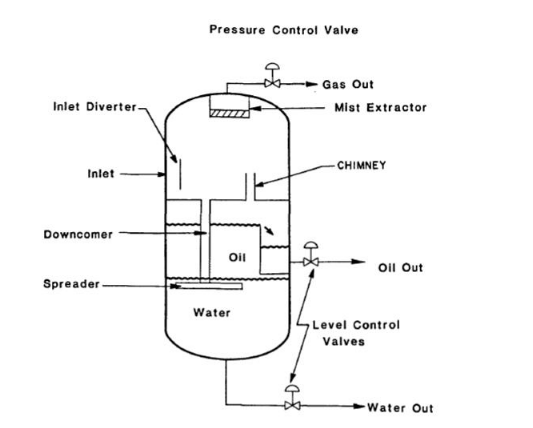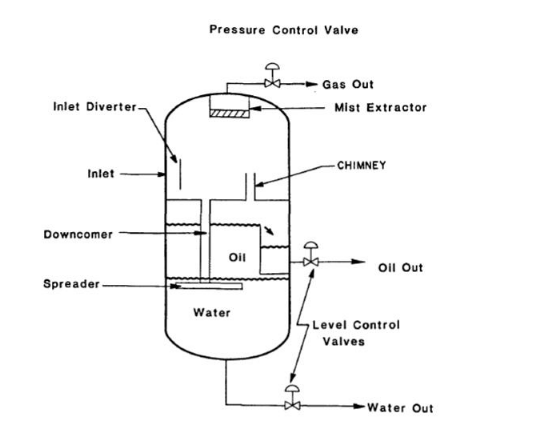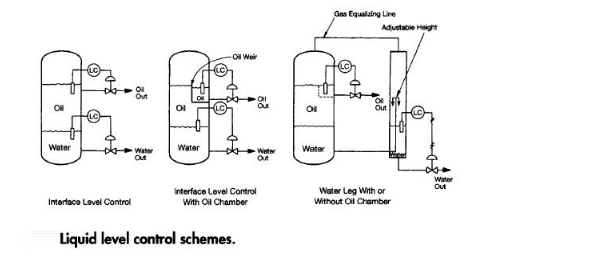
Flow enters the vessel through the side as in the horizontal separator, the inlet diverter separates the bulk of the gas. A downcomer is required to transmit the liquid through the oil-gas interface so as not to disturb the oil skimming action taking place. A chimney is needed to equalize gas pressure between the lower section and the gas section.
The spreader or downcomer outlet is located at the oil-water interface. From this point as the oil rises any free water trapped within the oil phase separates out. The water droplets flow countercurrent to the oil. Similarly, the water flows downward and oil droplets trapped in the water phase tend to rise countercurrent to the water flow.

Sometimes a cone bottom three-phase separator is used. This is a design that would be used if sand production was anticipated to be a major problem. The cone is normally at an angle to the horizontal of between 45° and 60°. Produced sand may have a tendency to stick to steel at 45°. If a cone is installed it could be part of the pressure containing walls of the vessel, or for structural reasons, it could be installed internal to the vessel cylinder. In such a case, a gas equalizing line must be installed to assure that the vapor behind the cone is always in pressure equilibrium with the vapor space.
The first is strictly level control. A regular displacer float is used to control the gas-oil interface and regulate a control valve dumping oil from the oil section. An interface float is used to control the oil-water interface and regulate a water outlet control valve. Because no internal baffling or weirs are used, this system is the easiest to fabricate and handles sand and solids production best. The second method shown uses a weir to control the gas-oil interface level at a constant position. This results in a better separation of water from the oil as all the oil must rise to the height of the oil weir before exiting the vessel. Its disadvantages are that the oil box takes up vessel volume and costs money to fabricate. In addition, sediment and solids could collect in the oil box and be difficult to drain, and a separate low level shut-down may be required to guard against the oil dump valve failing to open.
The third method uses two weirs, which eliminates the need for an interface float. Interface level is controlled by the height of the external water weir relative to the oil weir or outlet height. This is similar to the bucket and weir design of horizontal separators. The advantage of this system is that it eliminates the interface level control. The disadvantage is that it requires additional external piping and space.
